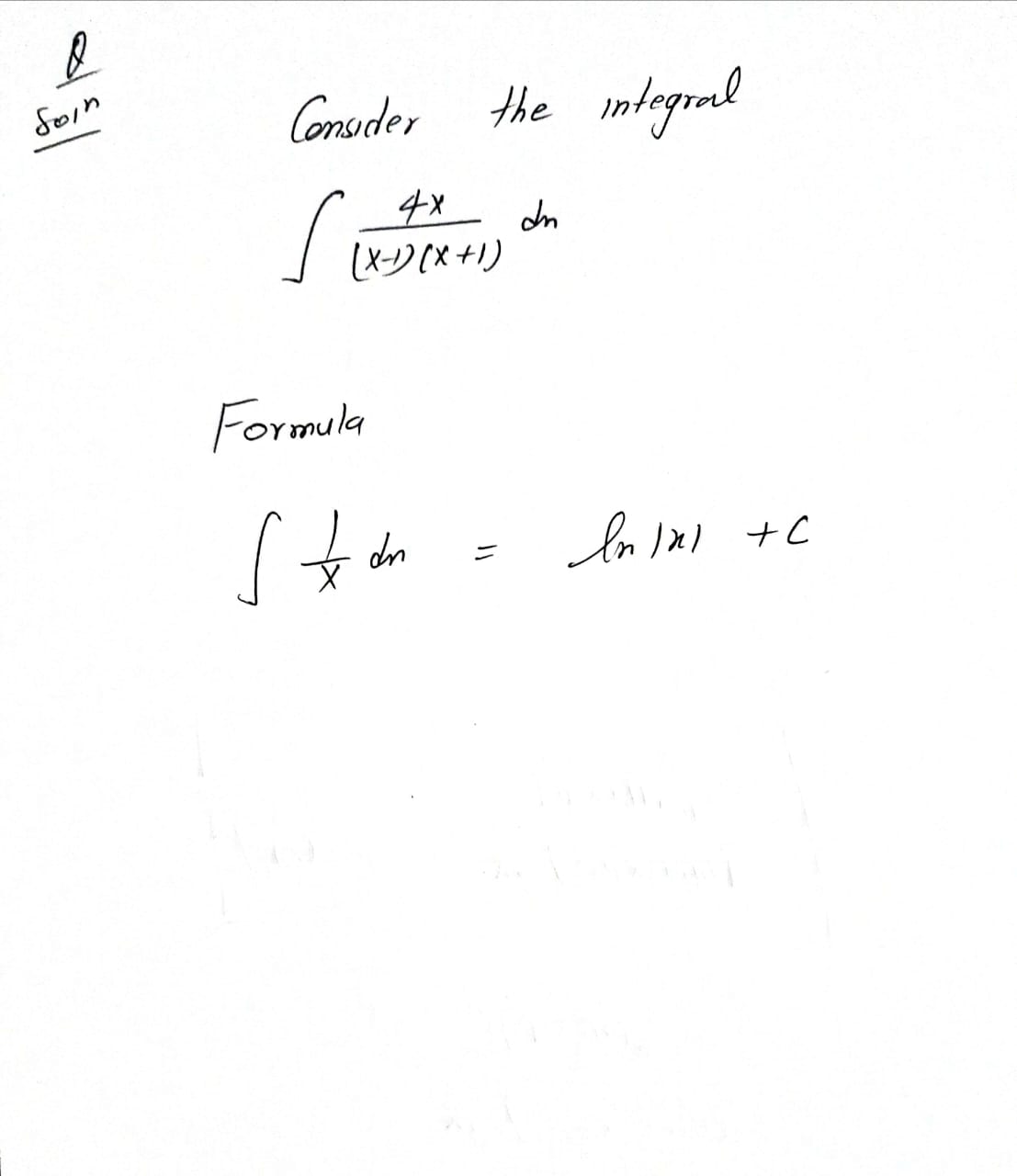> Read over Example 4 carefully. Then show how you decompose the following rational expression into its 2 partial fractions. HINT: You should be setting up and solving a system of two equations. 4x 2 2 + (x-1)(x+1) x-1 x+1 Find ¹S₁ = 4xdx (x-1)(x+1)
> Read over Example 4 carefully. Then show how you decompose the following rational expression into its 2 partial fractions. HINT: You should be setting up and solving a system of two equations. 4x 2 2 + (x-1)(x+1) x-1 x+1 Find ¹S₁ = 4xdx (x-1)(x+1)
Calculus: Early Transcendentals
8th Edition
ISBN:9781285741550
Author:James Stewart
Publisher:James Stewart
Chapter1: Functions And Models
Section: Chapter Questions
Problem 1RCC: (a) What is a function? What are its domain and range? (b) What is the graph of a function? (c) How...
Related questions
Question
The attached is the example 4

Transcribed Image Text:Find
1₁
52-4
22² +-1
Solution
Notice that the denominator can be factored as a product of linear factors:
or
5ce-4
2²+2-1
In a case like this, where the numerator has a smaller degree than the denominator, we can write the
given rational function as a sum of partial fractions:
BÁ
(+1)(2x - 1)
Note
52-4
(x+1)(2x − 1)
A
2+1
where A and B are constants. To find the values of A and B we multiply both sides of this equation by
(x + 1)(2x - 1), obtaining
+
B
2z-1
5x-4 A(2-1) + B(z+1)
52-4-(2A+B) + (-A+B)
The coefficients of a must be equal and the constant terms are also equal. So
561
(x+1)(2x - 1)
2A+B=5 and -A+B=-4
Solving this system of linear equations for A and B, we get A = 3 and B = -1, so
3
1
2+1 2x-1
Verify that this equation is correct by taking the fractions on the right side to a common denominator.
Each of the resulting partial fractions is easy to integrate (using the substitutions w=* + 1 and
u=27-1, respectively). So we have
3
/254-7-1dz = (2+1-22-1) dz

Transcribed Image Text:> Read over Example 4 carefully. Then show how you decompose the following rational expression
into its 2 partial fractions. HINT: You should be setting up and solving a system of two equations.
4x
2
2
+
(x-1)(x+1) x-1 x+1
Find
¹S₁
=
4xdx
(x-1)(x+1)
Expert Solution
Step 1

Step by step
Solved in 4 steps with 4 images

Recommended textbooks for you

Calculus: Early Transcendentals
Calculus
ISBN:
9781285741550
Author:
James Stewart
Publisher:
Cengage Learning

Thomas' Calculus (14th Edition)
Calculus
ISBN:
9780134438986
Author:
Joel R. Hass, Christopher E. Heil, Maurice D. Weir
Publisher:
PEARSON

Calculus: Early Transcendentals (3rd Edition)
Calculus
ISBN:
9780134763644
Author:
William L. Briggs, Lyle Cochran, Bernard Gillett, Eric Schulz
Publisher:
PEARSON

Calculus: Early Transcendentals
Calculus
ISBN:
9781285741550
Author:
James Stewart
Publisher:
Cengage Learning

Thomas' Calculus (14th Edition)
Calculus
ISBN:
9780134438986
Author:
Joel R. Hass, Christopher E. Heil, Maurice D. Weir
Publisher:
PEARSON

Calculus: Early Transcendentals (3rd Edition)
Calculus
ISBN:
9780134763644
Author:
William L. Briggs, Lyle Cochran, Bernard Gillett, Eric Schulz
Publisher:
PEARSON

Calculus: Early Transcendentals
Calculus
ISBN:
9781319050740
Author:
Jon Rogawski, Colin Adams, Robert Franzosa
Publisher:
W. H. Freeman


Calculus: Early Transcendental Functions
Calculus
ISBN:
9781337552516
Author:
Ron Larson, Bruce H. Edwards
Publisher:
Cengage Learning